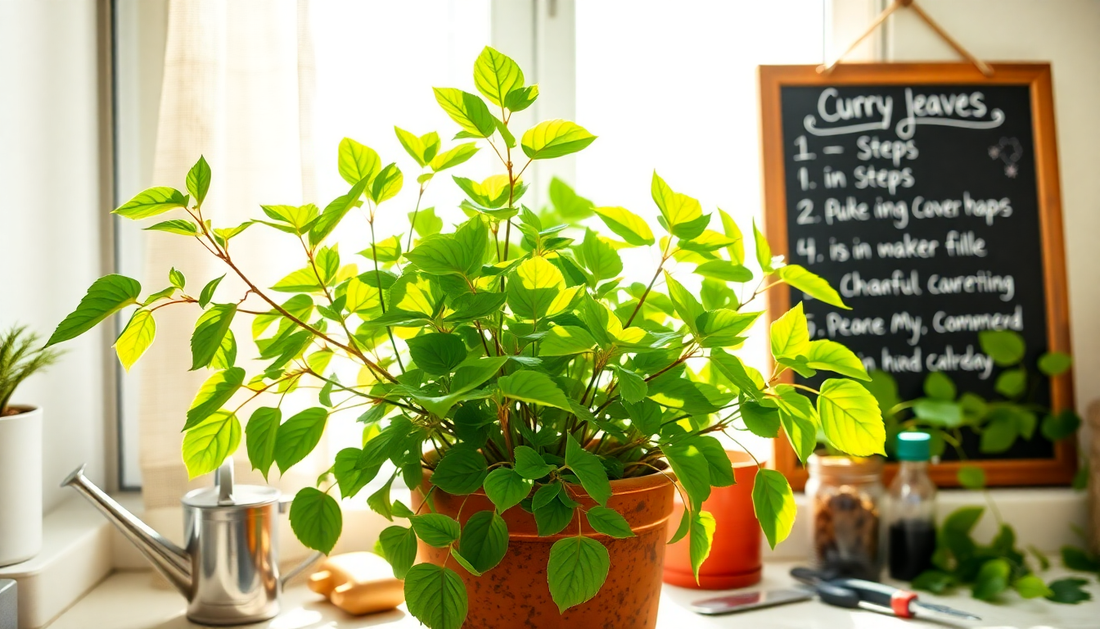
Grow Your Own Curry Leaves: A Step-by-Step Guide
Share
In the bustling city of Bangalore, there's a hidden gem for all your gardening needs - Idyl. This online shop is a one-stop destination for plants, fertilizers, and even gardening services. And today, we're going to dive into the world of growing your own curry leaves, a staple in Indian cuisine.
Curry leaves, scientifically known as Murraya koenigii, are not only a flavorful addition to your dishes but also offer a range of health benefits. These aromatic leaves are rich in antioxidants, vitamins, and minerals, making them a valuable addition to any kitchen garden.
Choosing the Right Curry Leaf Seeds
The first step in your curry leaf-growing journey is to select the right seeds. Idyl offers a variety of high-quality curry leaf seeds, ensuring you get the best start for your plants. When choosing your seeds, look for ones that are plump, dark in color, and free of any blemishes or damage.
It's important to note that curry leaf seeds have a relatively short shelf life, so it's best to purchase them from a reputable source like Idyl, where you can be confident in their freshness and viability.
Preparing the Soil
Curry leaves thrive in well-draining, nutrient-rich soil. Before planting your seeds, take some time to prepare the soil. Mix in some compost or well-rotted organic matter to improve the soil's texture and fertility. You can also add a bit of sand or perlite to enhance drainage.
If you're growing your curry leaves in containers, make sure to use a high-quality potting mix that is specifically formulated for herbs and vegetables. This will ensure your plants have the right balance of nutrients and drainage.
Planting and Germination
Once you have your seeds and soil ready, it's time to get planting! Sow the seeds about 1-2 inches deep and 6-8 inches apart. If you're growing in containers, you can plant multiple seeds in a single pot, spacing them out accordingly.
After planting, water the soil gently, being careful not to displace the seeds. Keep the soil moist but not waterlogged, and be patient - it can take 2-4 weeks for the seeds to germinate, depending on the temperature and soil conditions.
Caring for Your Curry Leaf Plants
As your curry leaf seedlings start to emerge, it's important to provide them with the right care and attention. Here are some tips to help your plants thrive:
Sunlight and Temperature
Curry leaves prefer a warm, sunny environment. Place your plants in a spot that receives at least 6 hours of direct sunlight per day. If growing indoors, consider using a grow light to supplement the natural light.
The ideal temperature range for curry leaves is between 70-85°F (21-29°C). Avoid exposing your plants to sudden temperature changes or cold drafts, as this can stunt their growth or even cause them to wilt.
Watering
Consistent, moderate watering is key for healthy curry leaf plants. Water your plants when the top inch of soil feels dry to the touch, being careful not to overwater. Overwatering can lead to root rot and other issues.
Fertilizing
To ensure your curry leaves receive the necessary nutrients, fertilize them every 4-6 weeks with a balanced, organic fertilizer. Idyl offers a range of high-quality fertilizers that are perfect for your curry leaf plants.
Pruning and Harvesting
Regular pruning will encourage your curry leaf plant to grow bushy and full. Snip off the leaves as needed, taking care not to remove more than a third of the plant at a time. This will help stimulate new growth and keep your plant healthy.
When it comes to harvesting, the best time to collect your curry leaves is in the morning, after the dew has dried. Gently pluck the leaves, leaving the stem intact to allow for continued growth.
Troubleshooting Common Issues
As with any plant, you may encounter some challenges along the way. Here are a few common issues and how to address them:
Yellowing Leaves
If your curry leaf plant's leaves are turning yellow, it could be a sign of overwatering, nutrient deficiency, or too much direct sunlight. Adjust your watering schedule, fertilize the plant, or move it to a slightly more shaded area to see if the issue resolves.
Pests
Curry leaves can be susceptible to pests like aphids, mealybugs, or spider mites. Keep an eye out for any signs of infestation and address the problem quickly with an organic pest control solution.
Stunted Growth
If your curry leaf plant is not growing as quickly as you'd like, it could be due to insufficient sunlight, poor soil quality, or root bound conditions. Ensure your plant is getting enough sun, amend the soil as needed, and consider repotting if the plant is rootbound.
Remember, with the right care and attention, your curry leaf plants will thrive and provide you with a bountiful harvest of flavorful leaves for your cooking adventures.
Conclusion
Growing your own curry leaves at home is a rewarding and practical endeavor. With the help of Idyl's high-quality seeds and gardening expertise, you can easily cultivate a thriving curry leaf plant right in your own backyard or balcony.
By following the steps outlined in this guide, you'll be well on your way to enjoying the fresh, aromatic flavors of homegrown curry leaves in your favorite dishes. Happy gardening!
